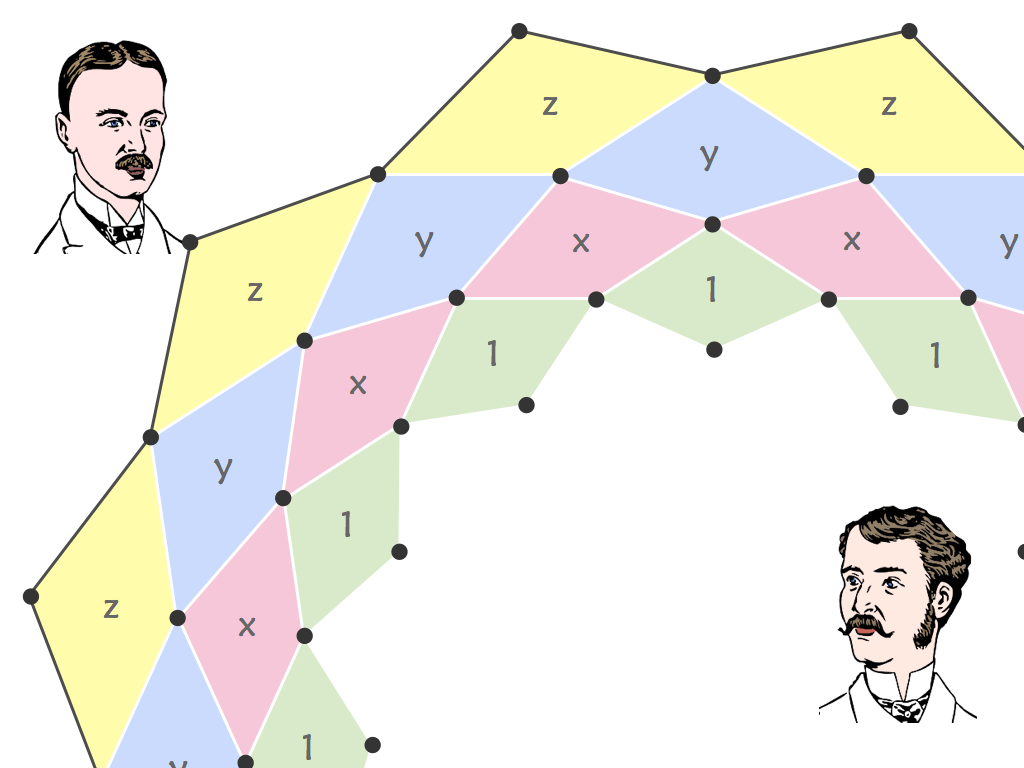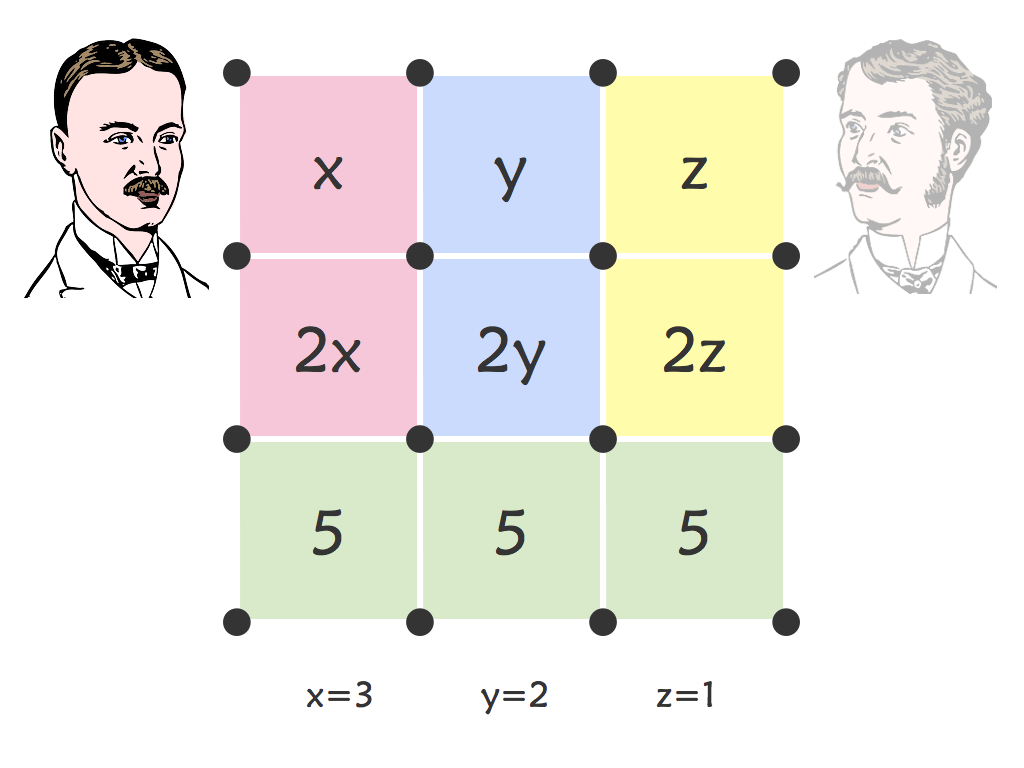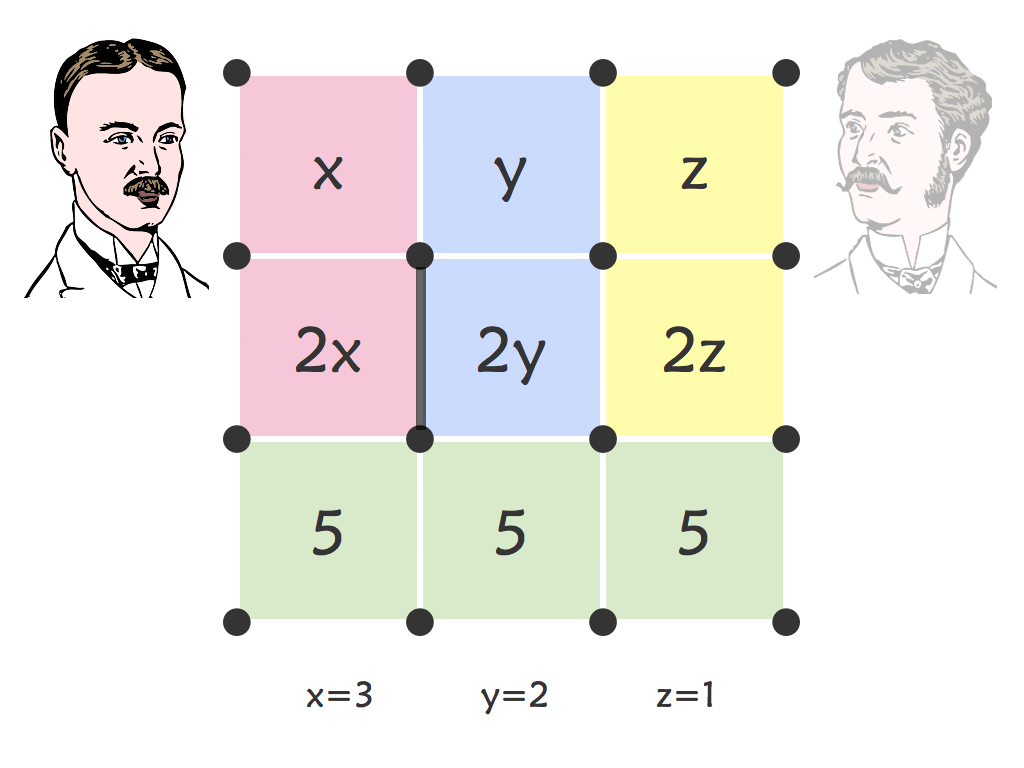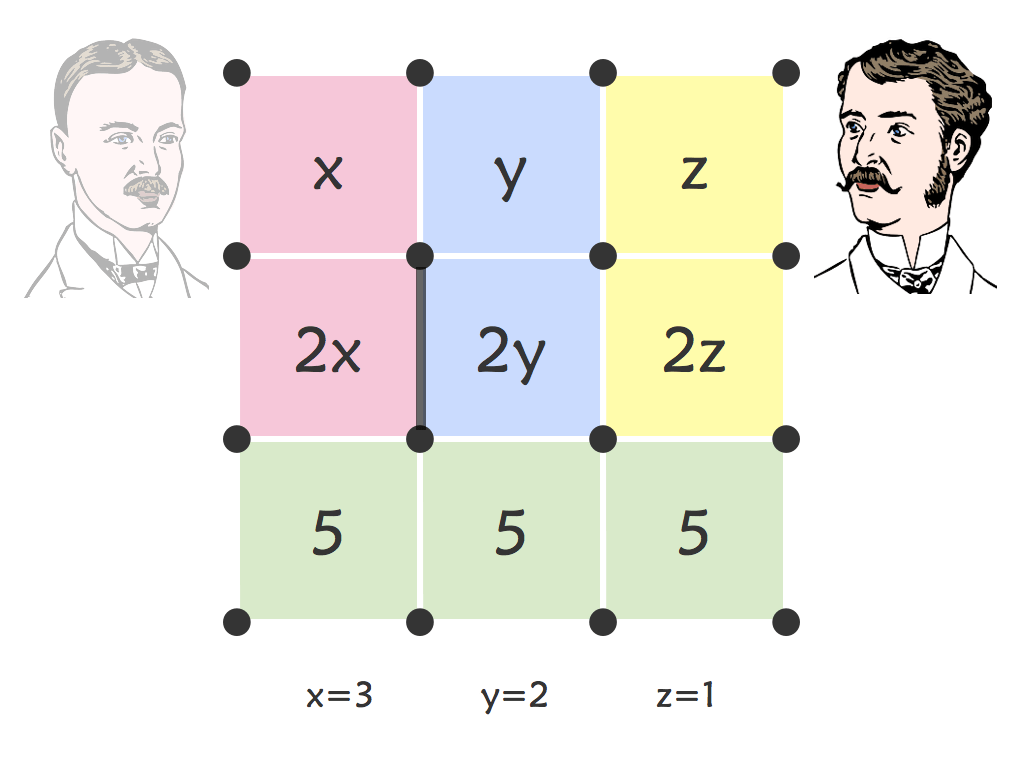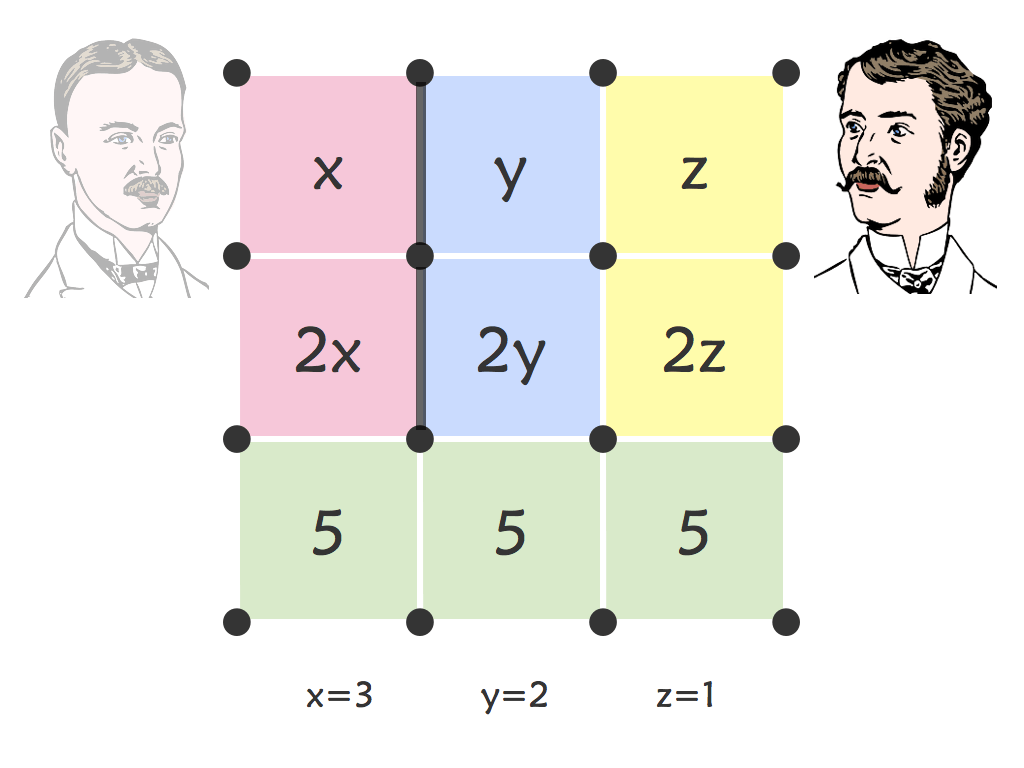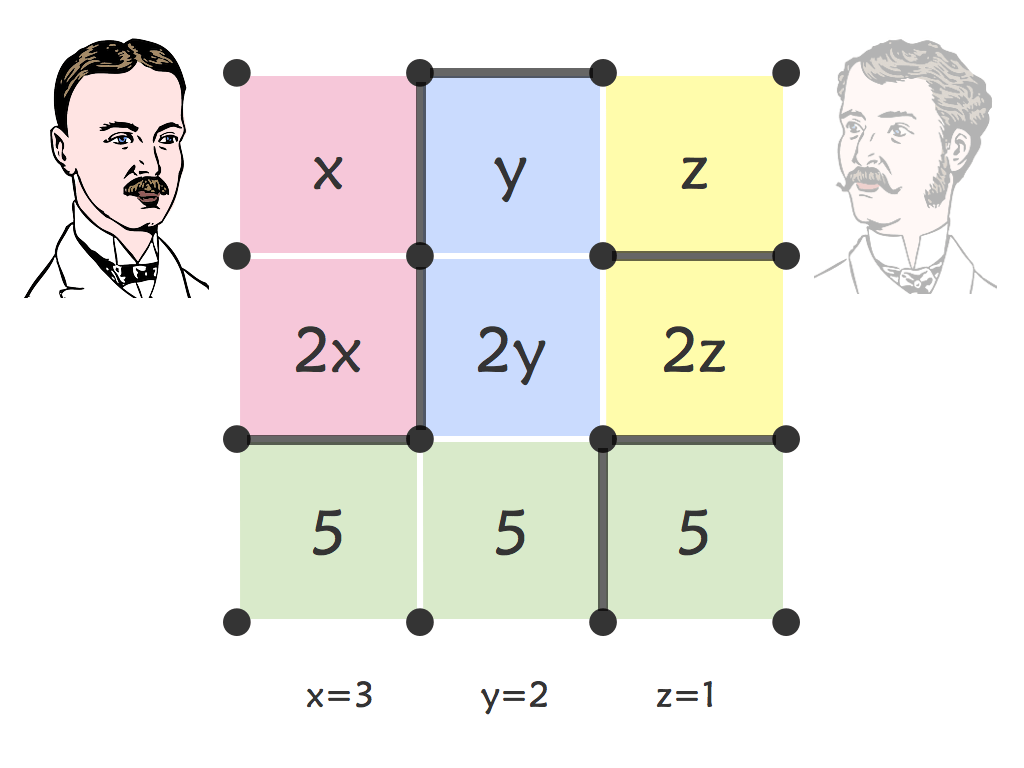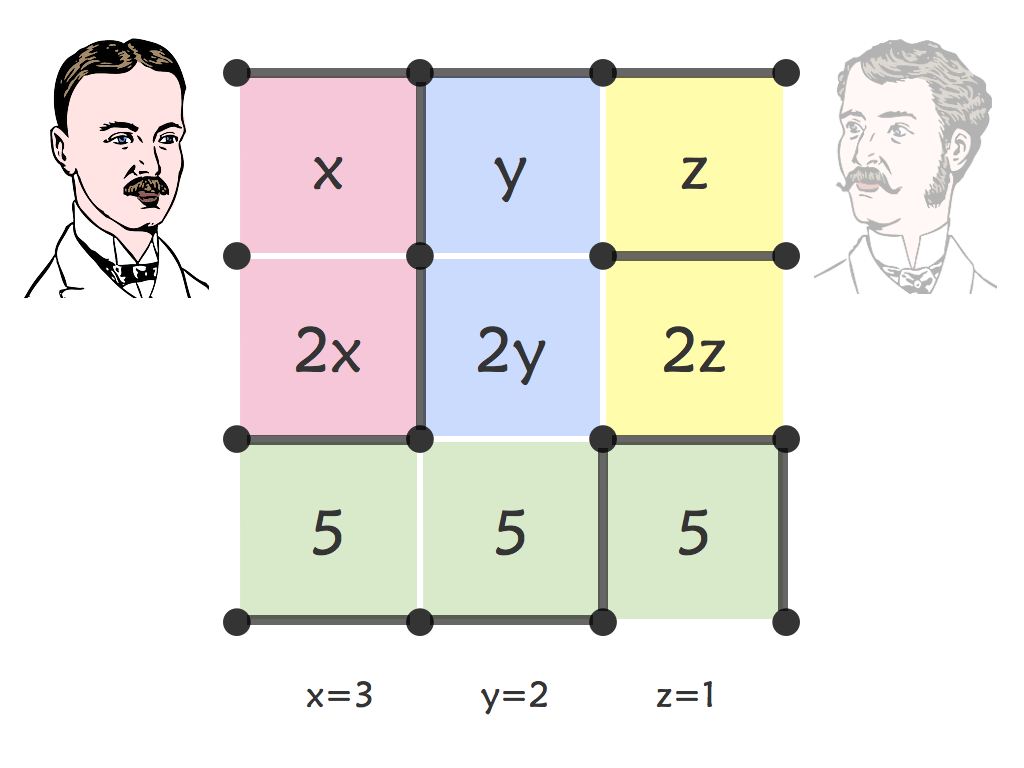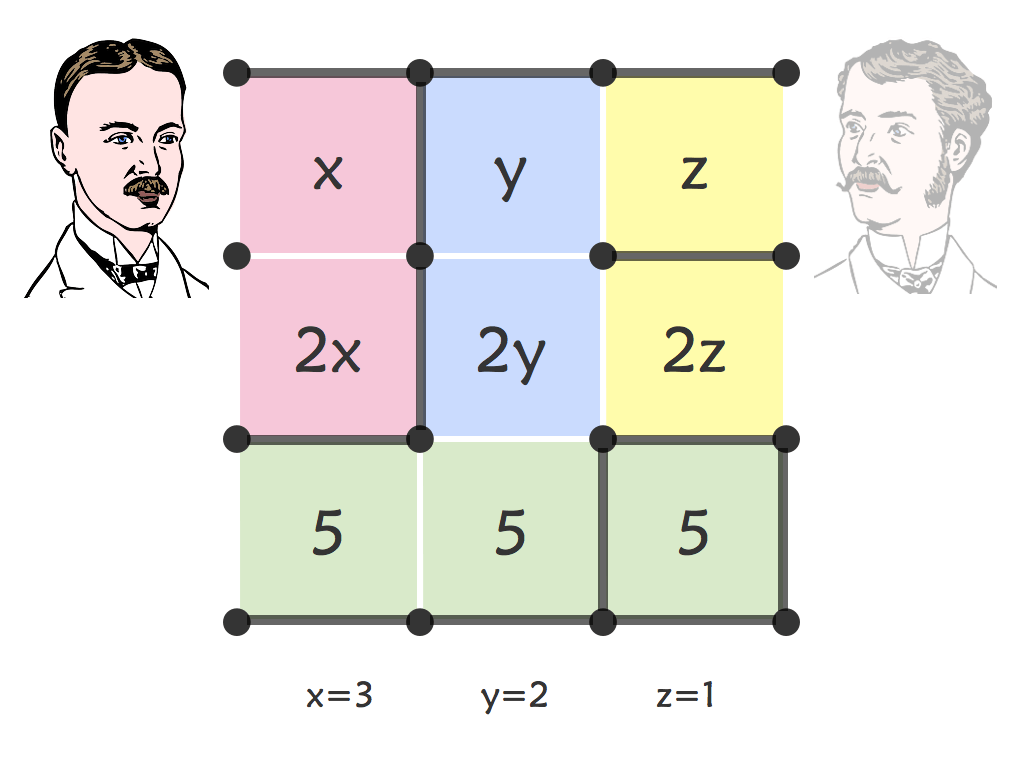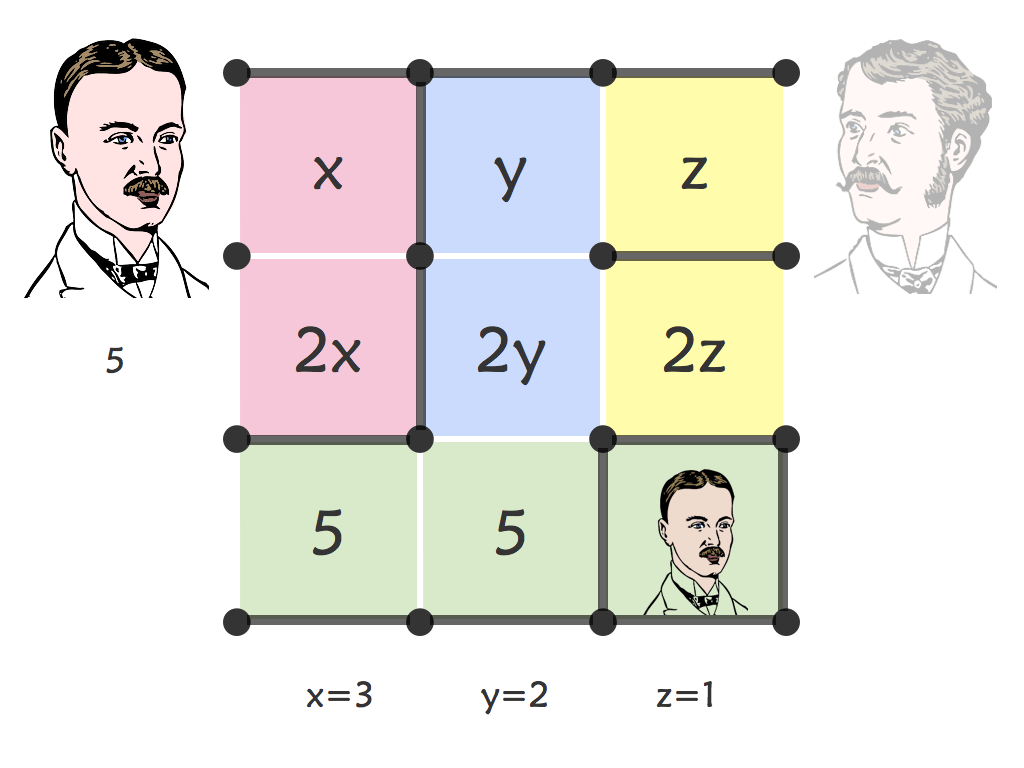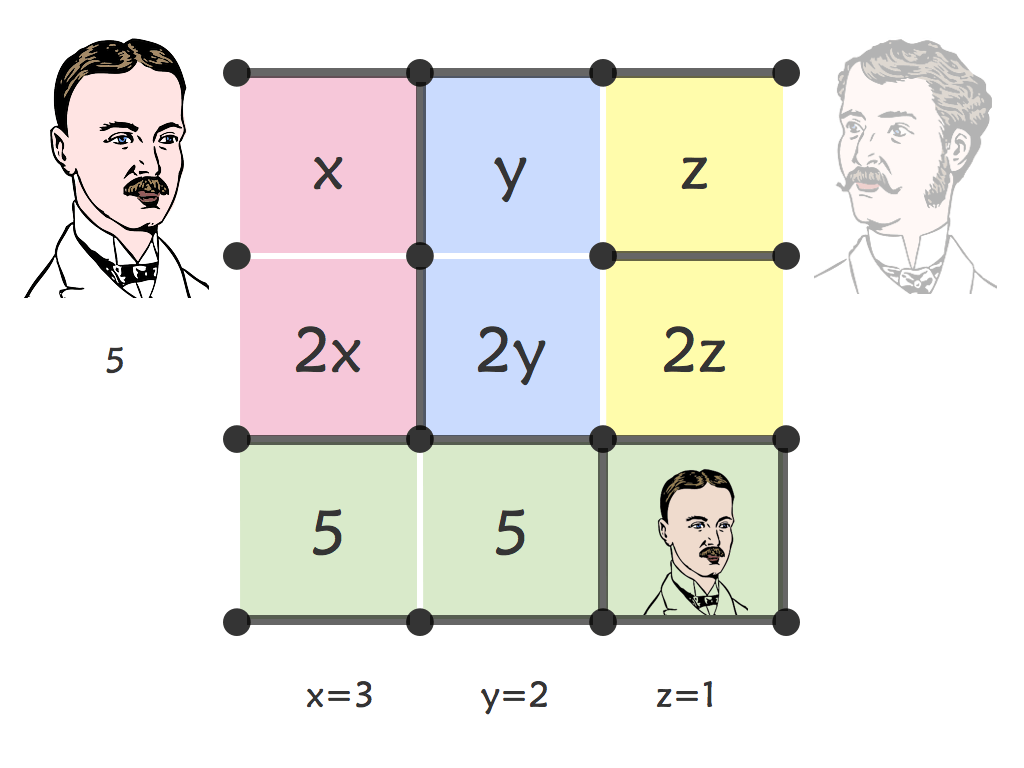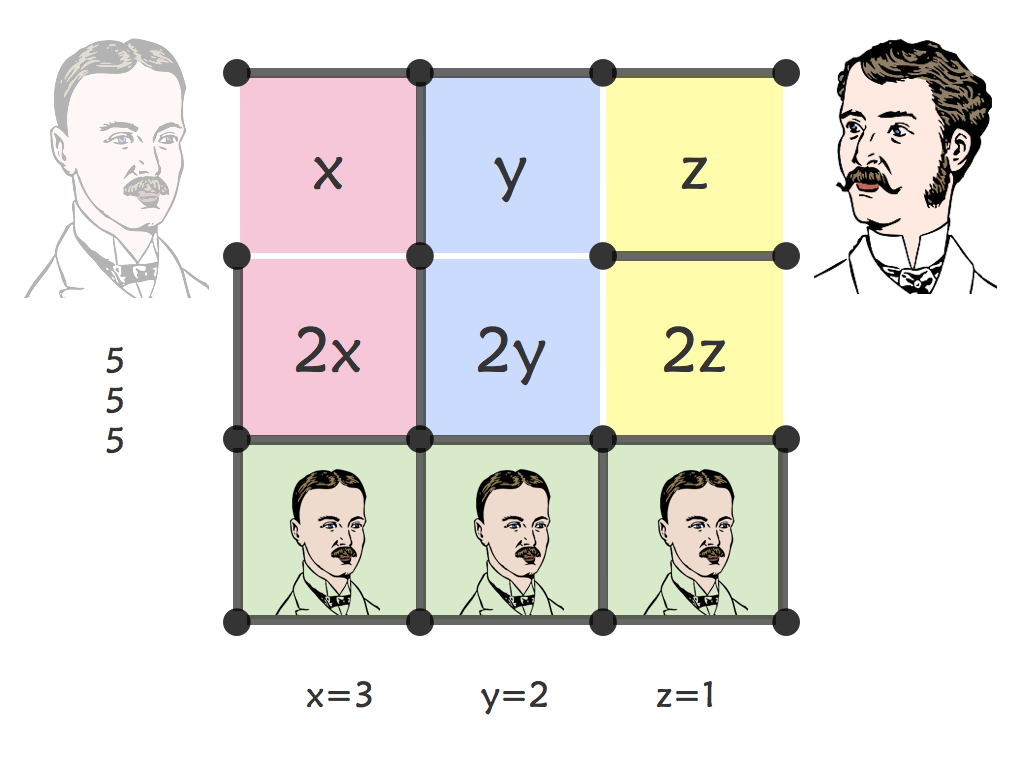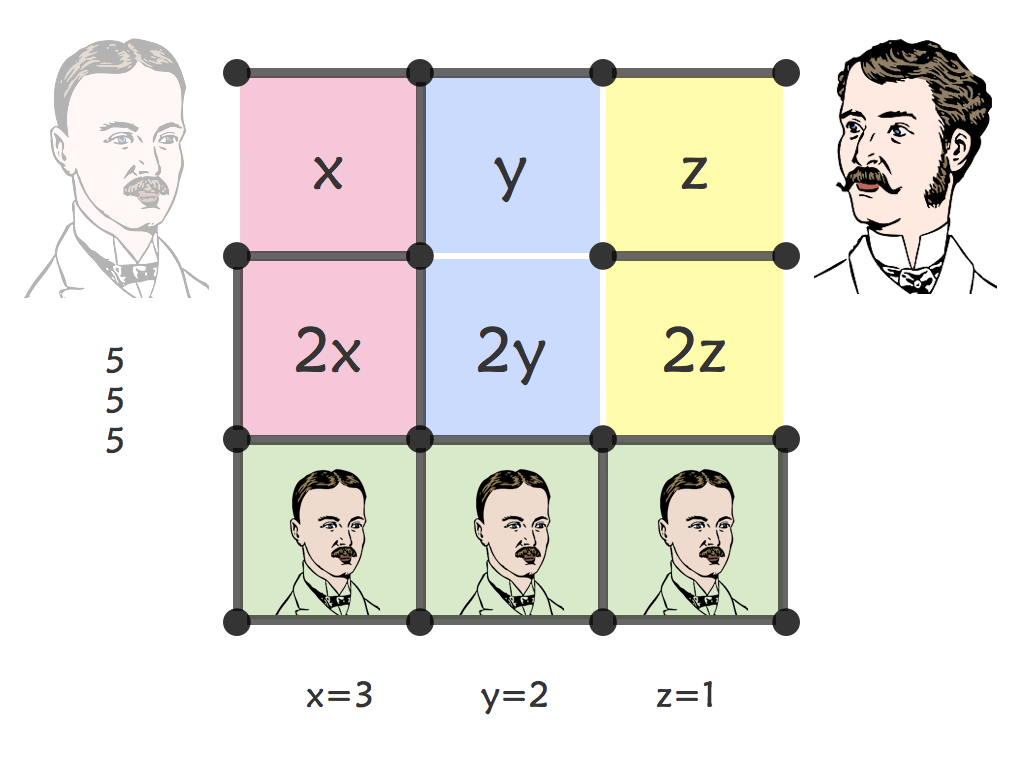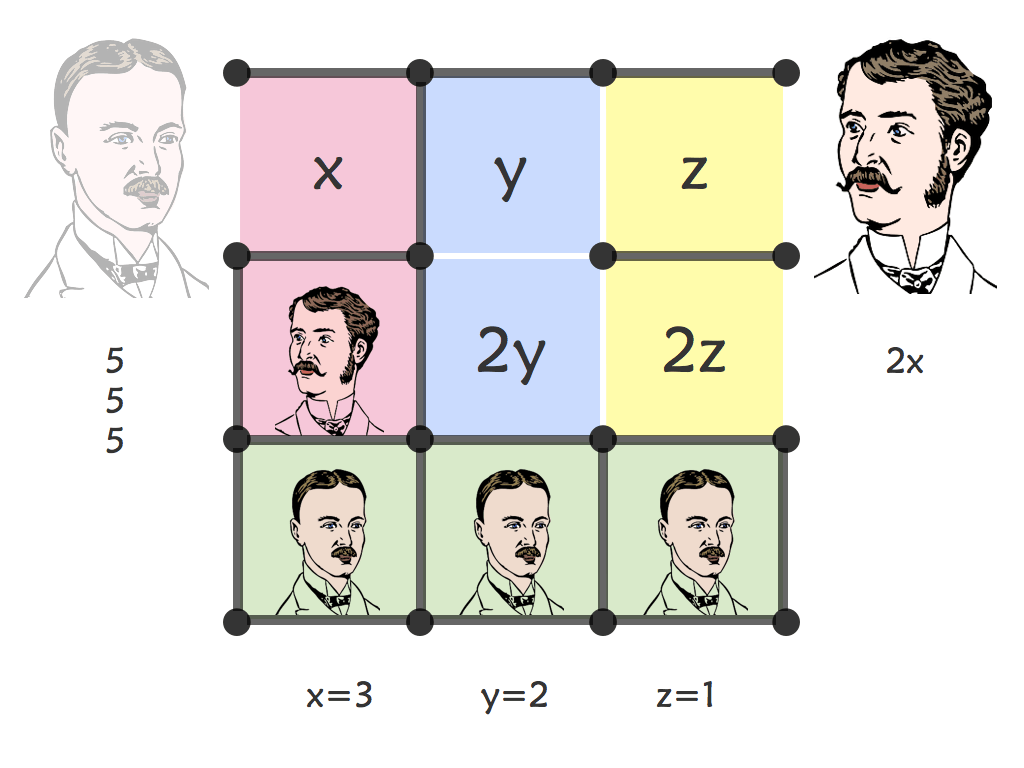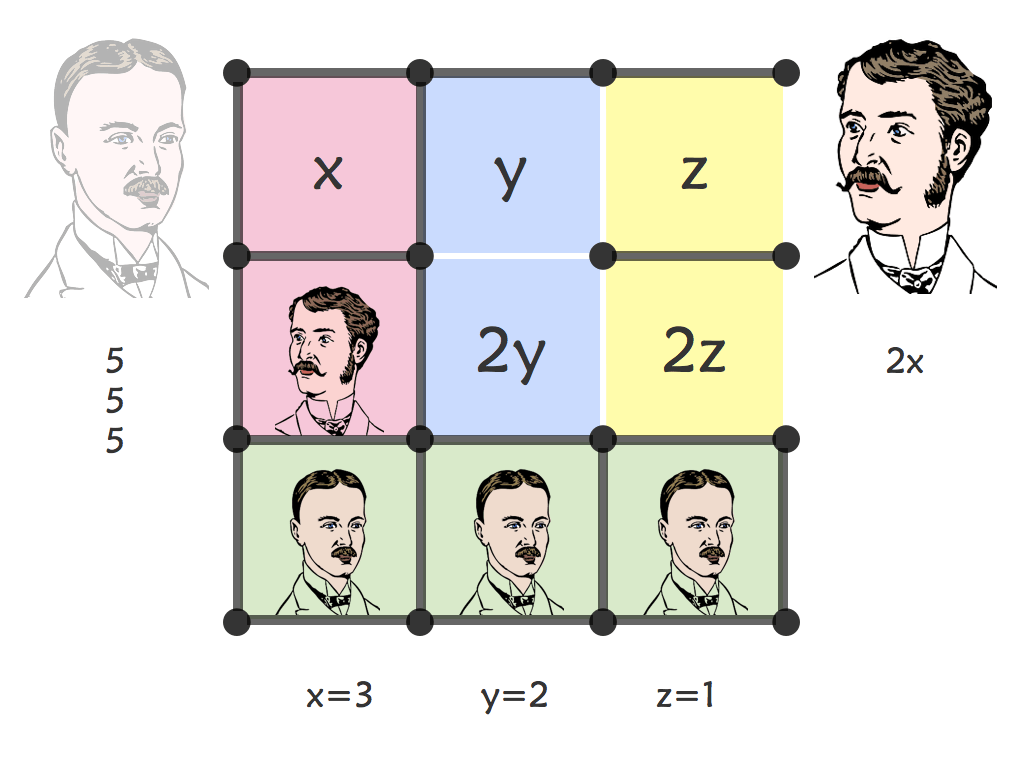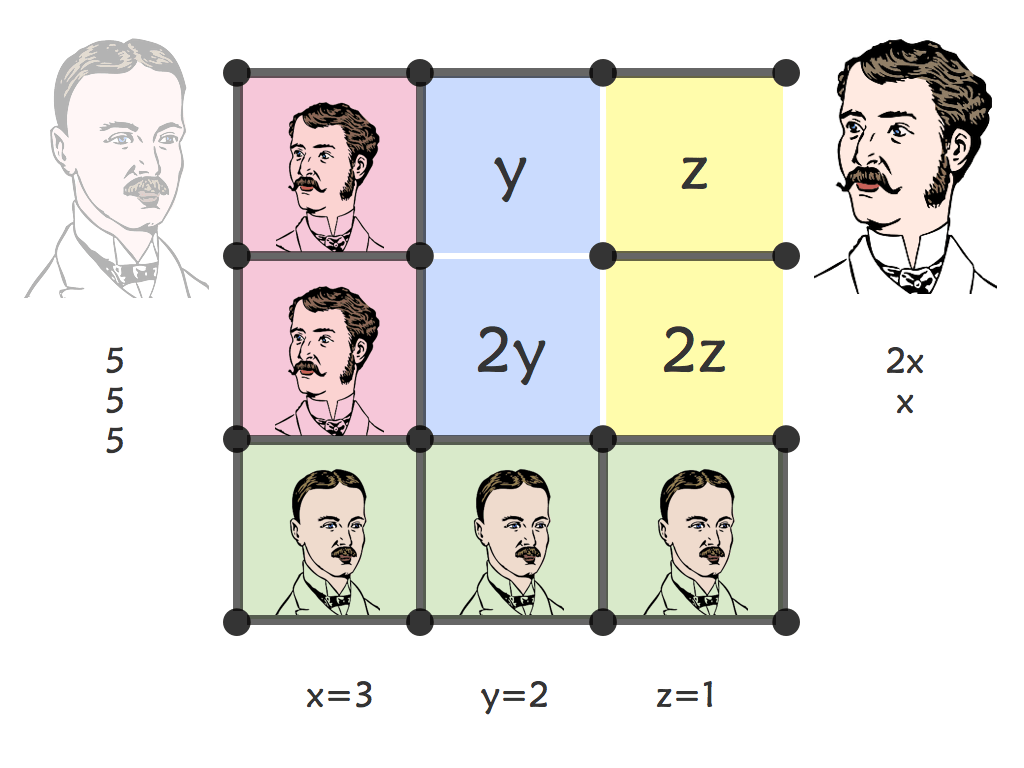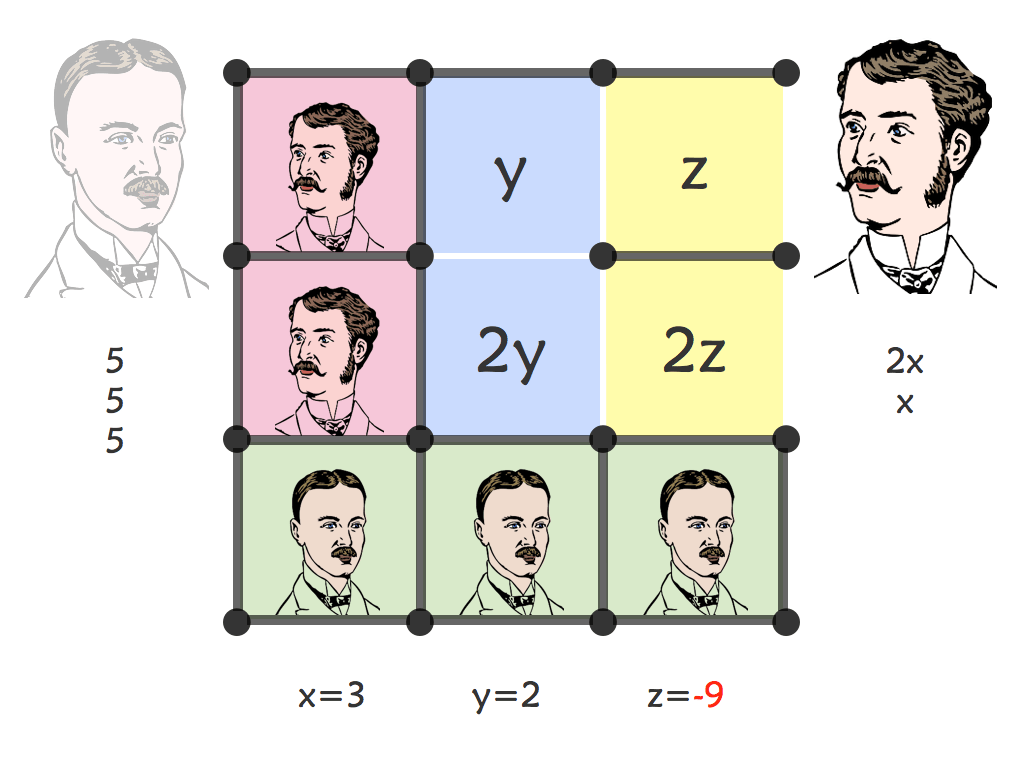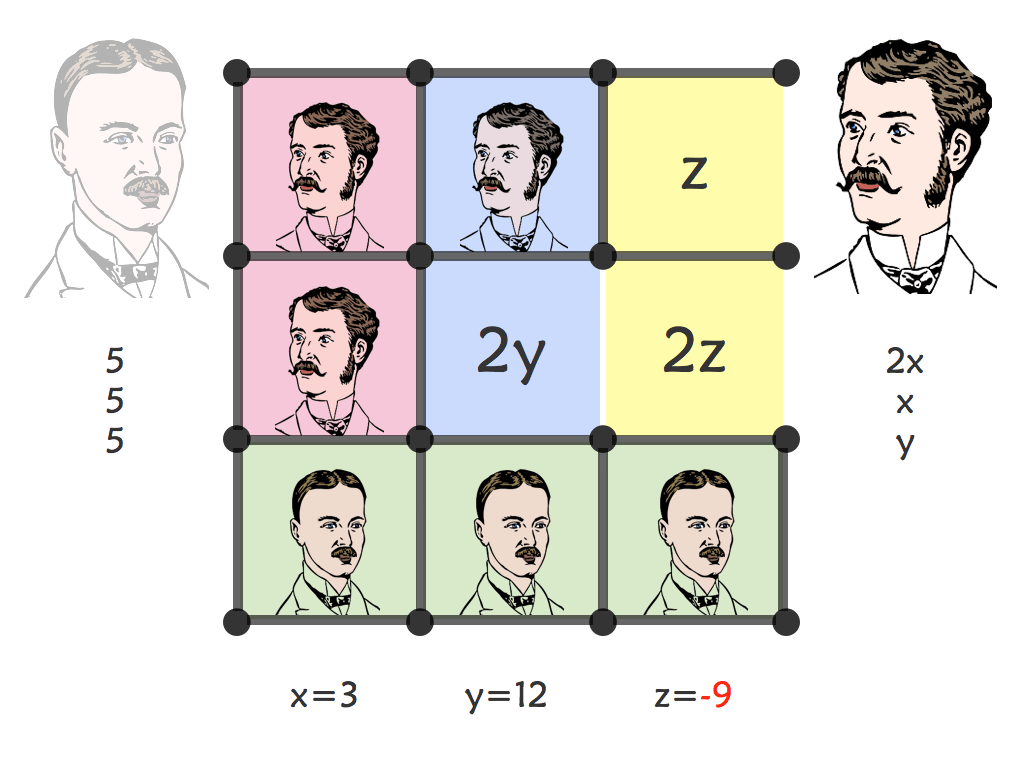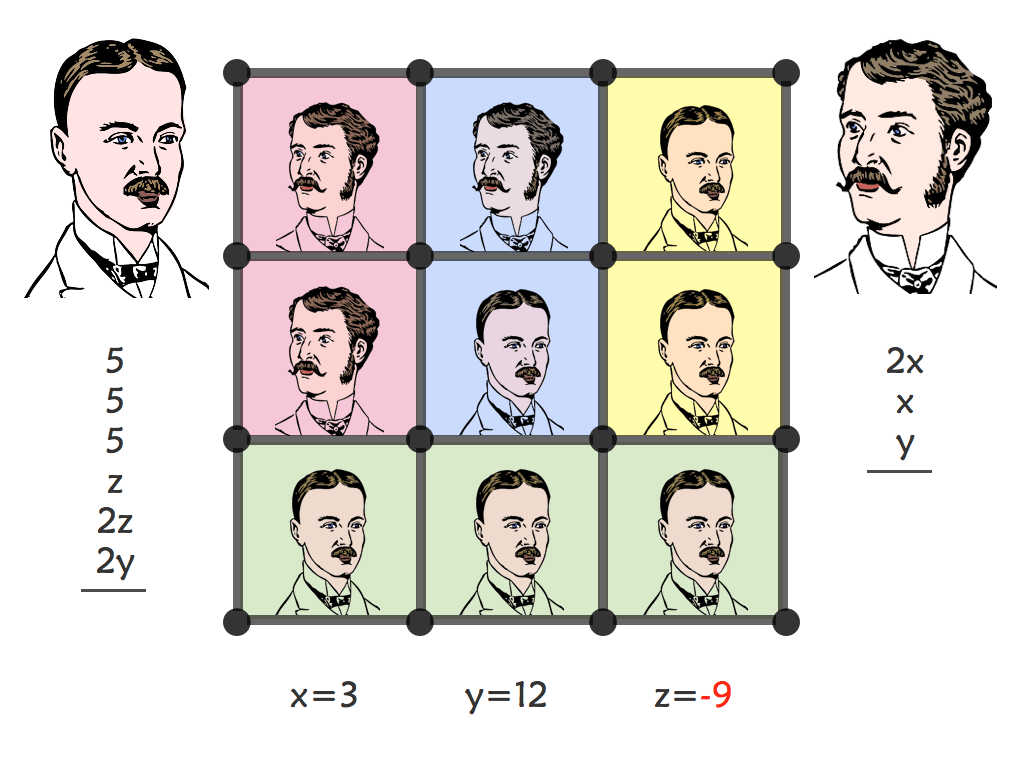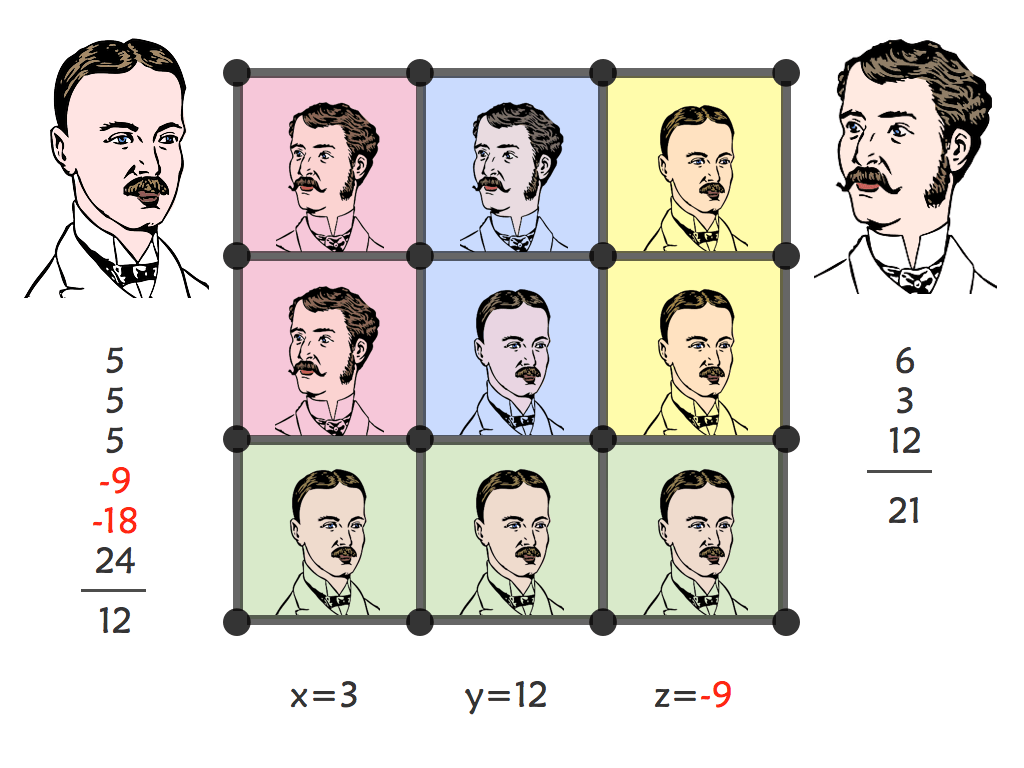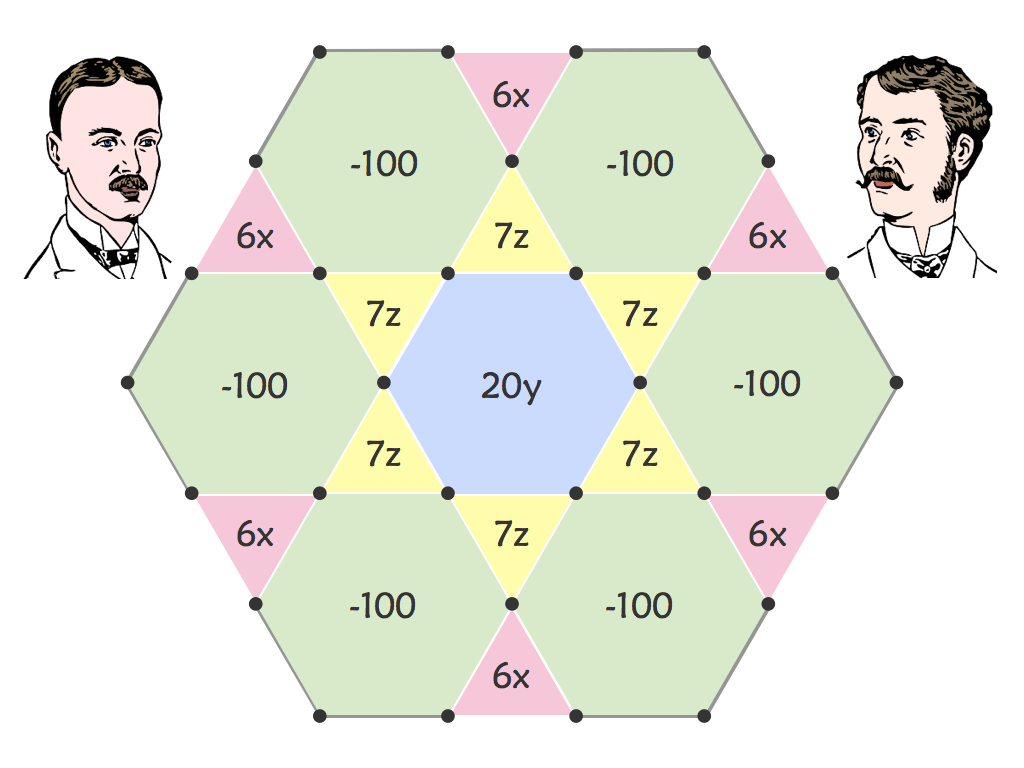Algebra
This is a single variable algebra puzzle in which students try to find squares of different sizes to tile a rectangle. I prefer the two variable algebra variant on the right.
Get students to create their own history puzzles.
Students use linear algebra to build rectangles out of squares. The results are aesthetically pleasing and difficult to reproduce by trial and error.
Lessons should start on graph paper - giving students the challenge of trying to "build a rectangle using squares of all different sizes." Students will find it extremely difficult. After several minutes hold a vote asking if it is an impossible problem.
Download puzzle-sheets here.
Give your students practice working with the addition of square roots and Pythagoras.
Download puzzle-sheets here.
This is a great game to play with your class as they struggle to figure out how to add integers.
PS. Keep the selections between about -5 and +5. Use the word “about” as you do not want students to know for sure that a -6 was not used.
These three exercises go from easy to unsolved. It is this last unsolved problem from the nineteenth century that is absolutely essential in every student’s experience of algebra.
Cartouche Puzzles
(MathPickle, 2012)
These versatile puzzles are great for adults and children alike. They are based on KenKen puzzles, but are superior for the classroom because they offer engaging ways to get at age-appropriate arithmetic skills.
Printable black & white Cartouche puzzles here.
Printable colour Cartouche puzzles here.
PS. These puzzles grow out of KenKen puzzles. In the hands of a master puzzle designer like Thomas Snyder, these are hard fun at its best. However KenKen puzzles lack sufficient flexibility when one is designing for the classroom. For example, there is too much of 5/1 = 5 and 1+2=3 to make them hit curricular targets. Cartouche puzzles solve this.
Use algebra to help find solutions to putting pirates and cutthroats into jail. Sounds righteous, but its darn difficult when each cell has constraints for the fraction of pirates and cutthroats.
Download puzzle-sheets here.
The latter part of this video has an algebraic component.
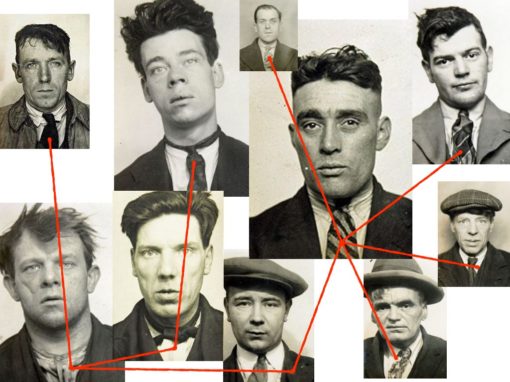
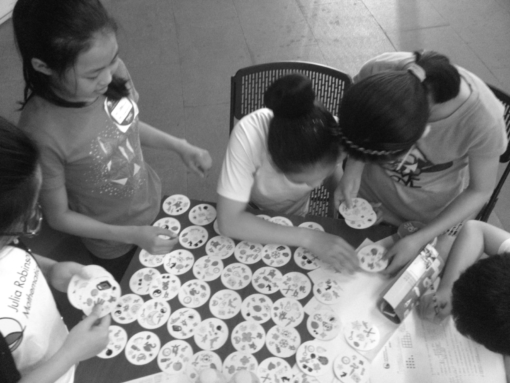
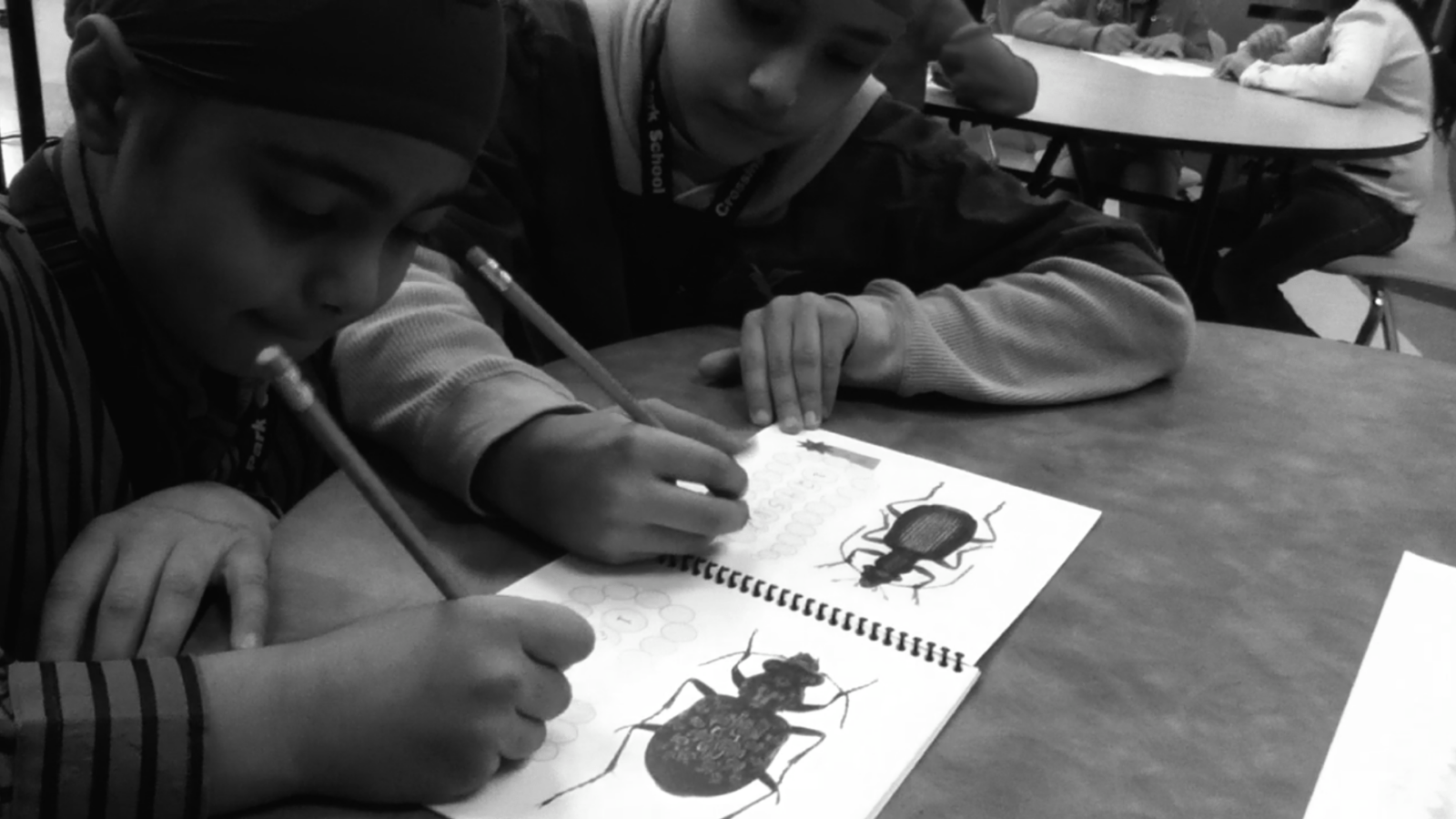
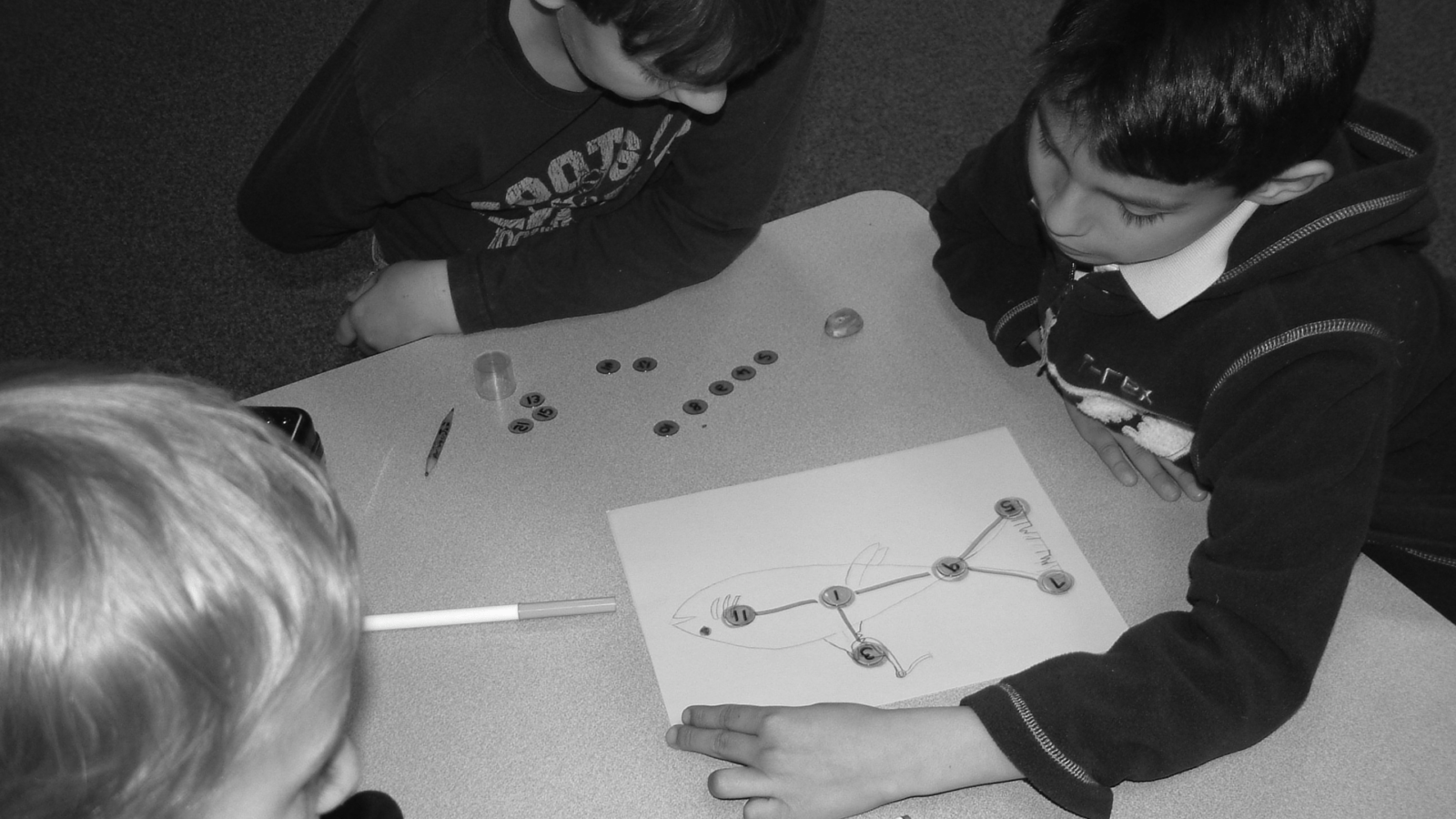
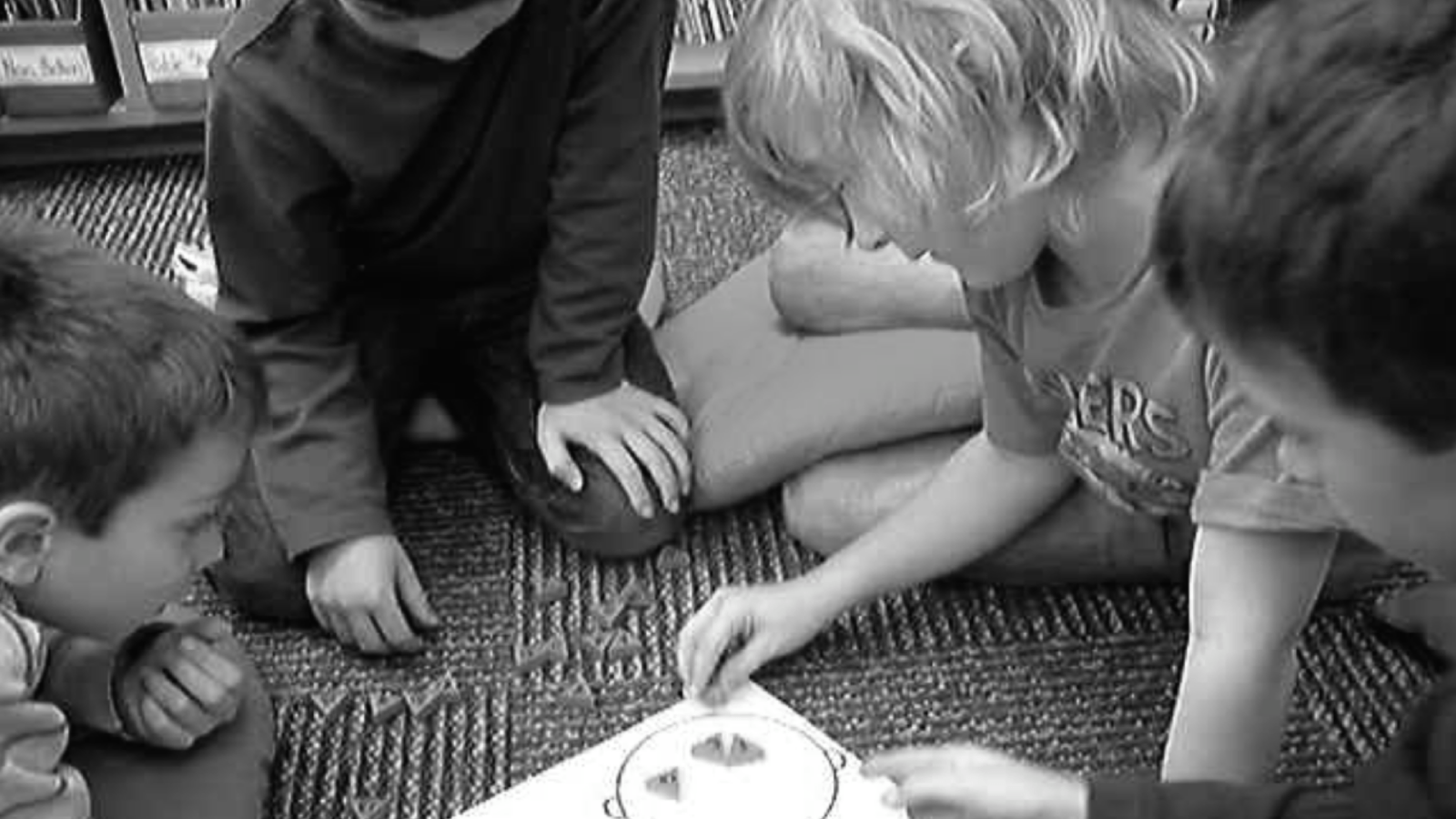
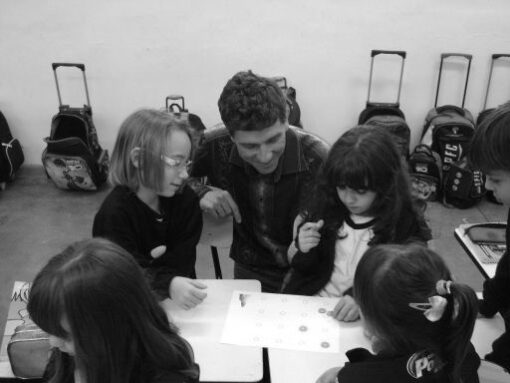
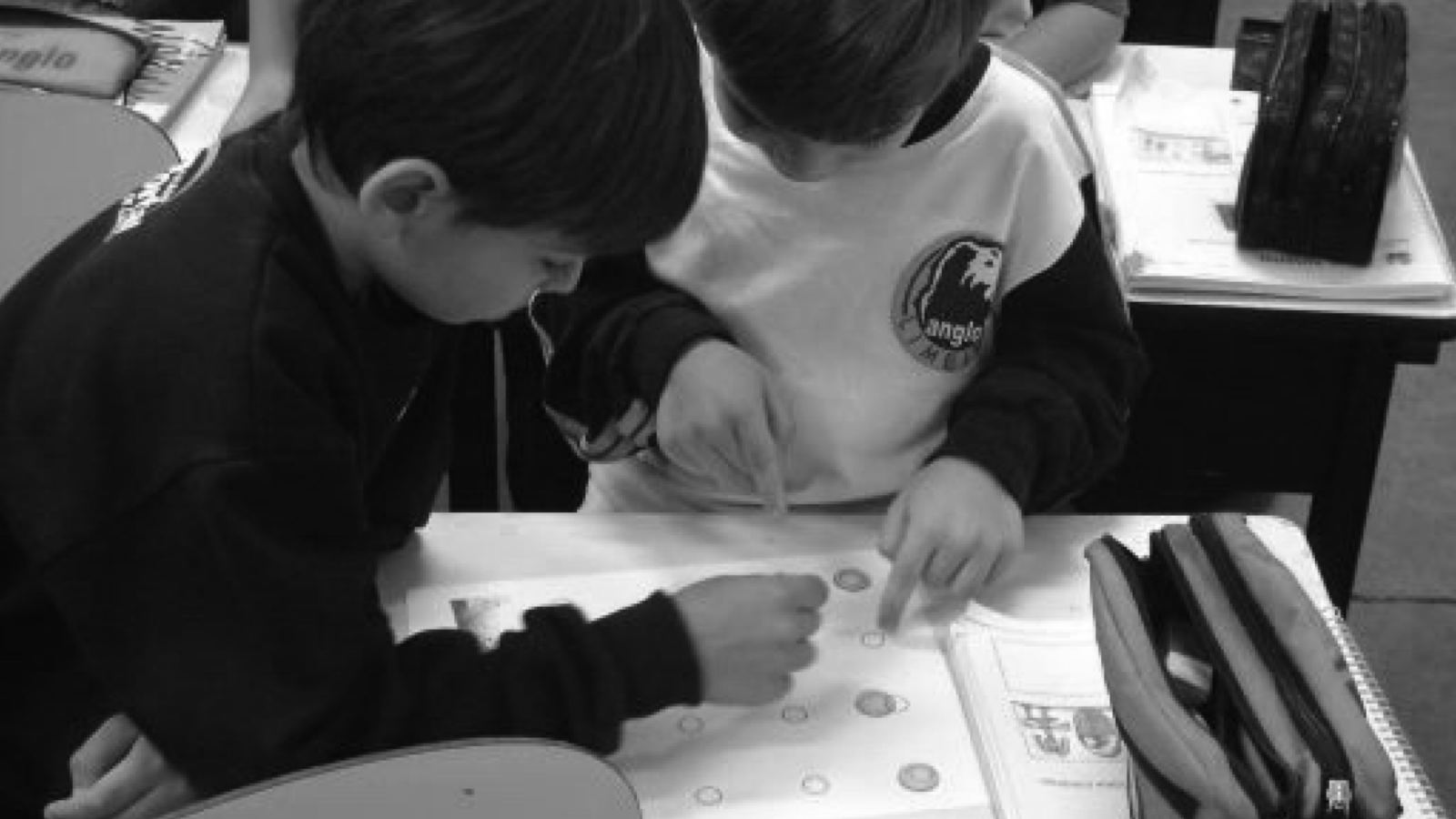
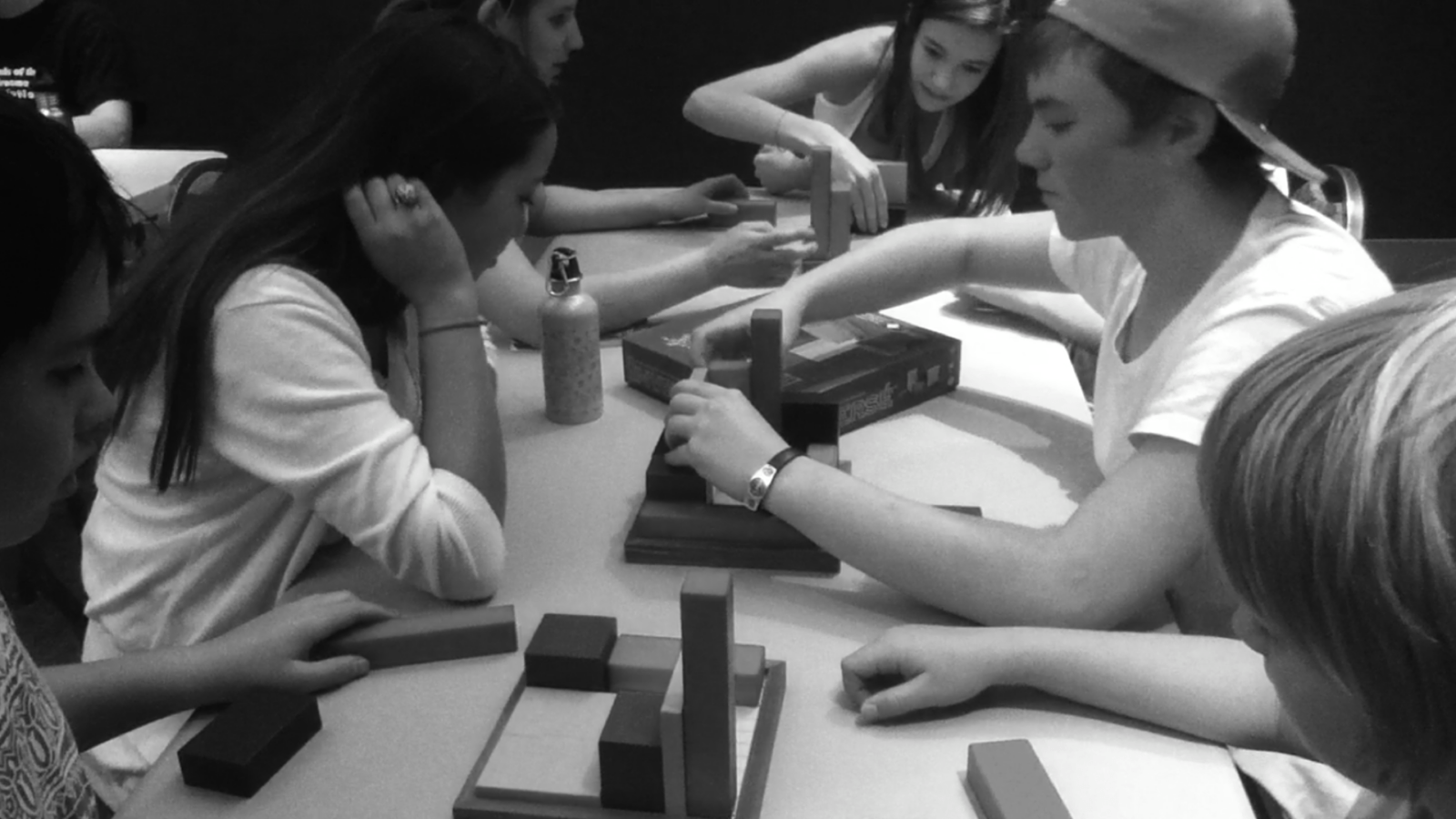
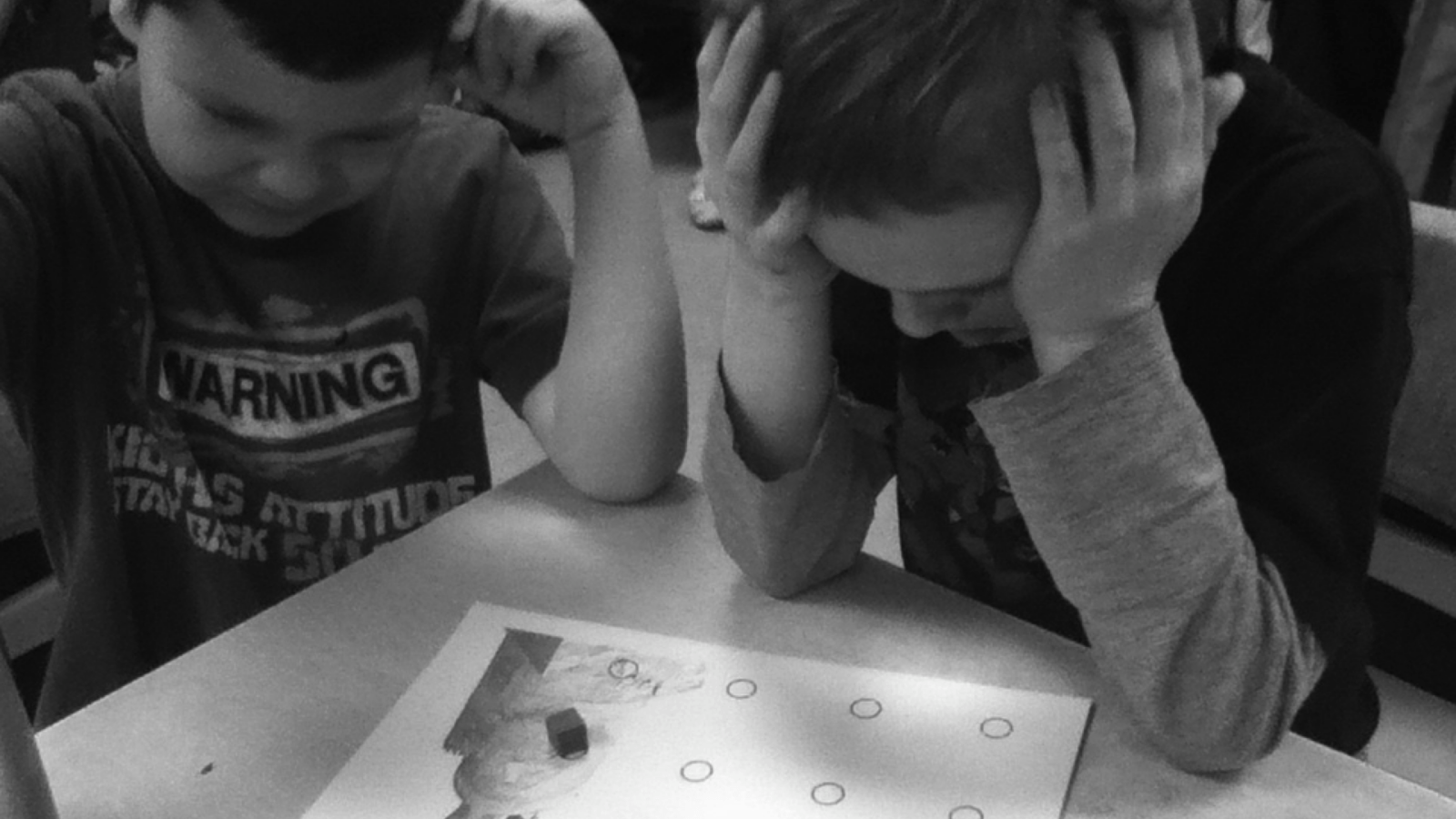
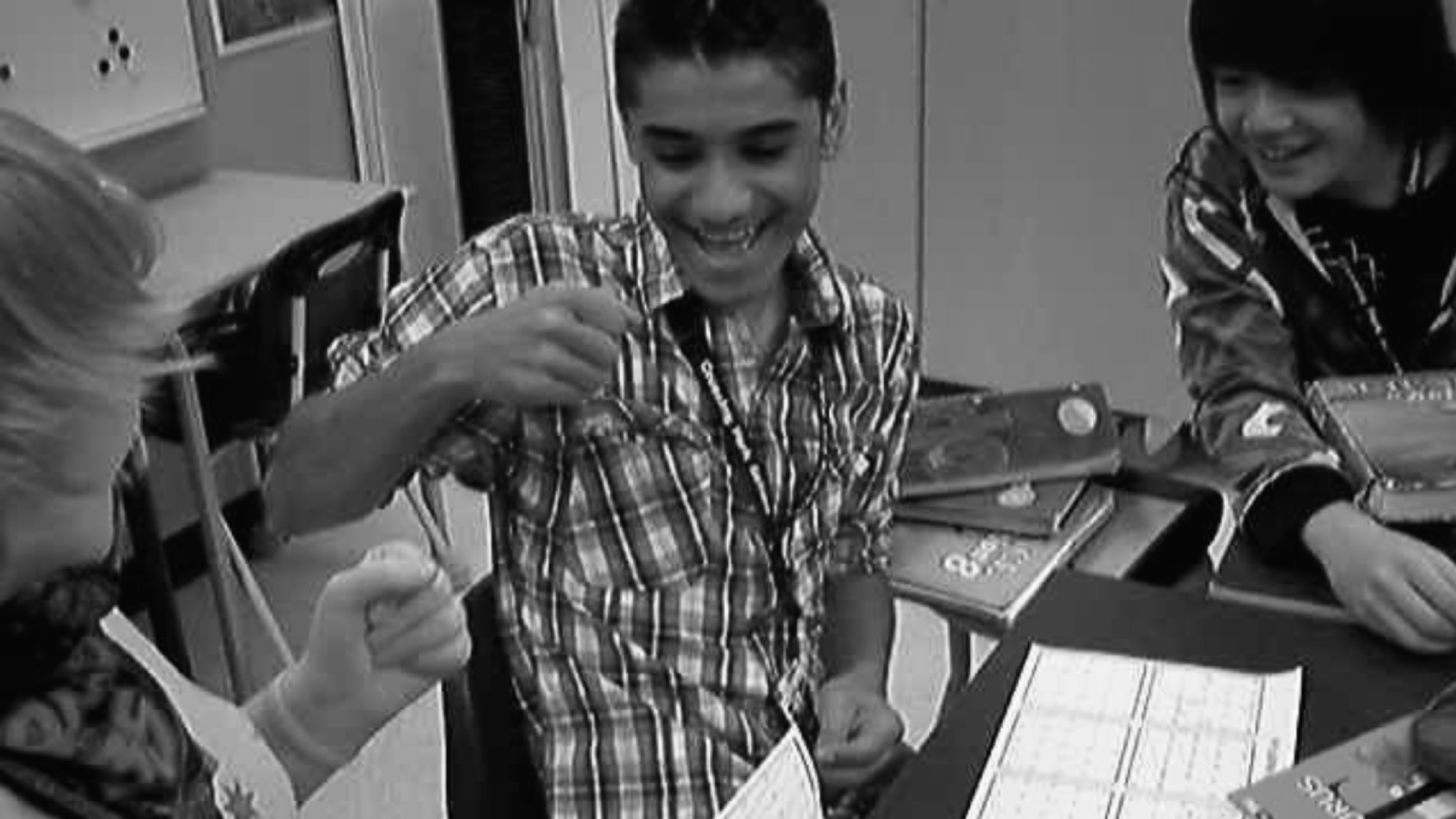
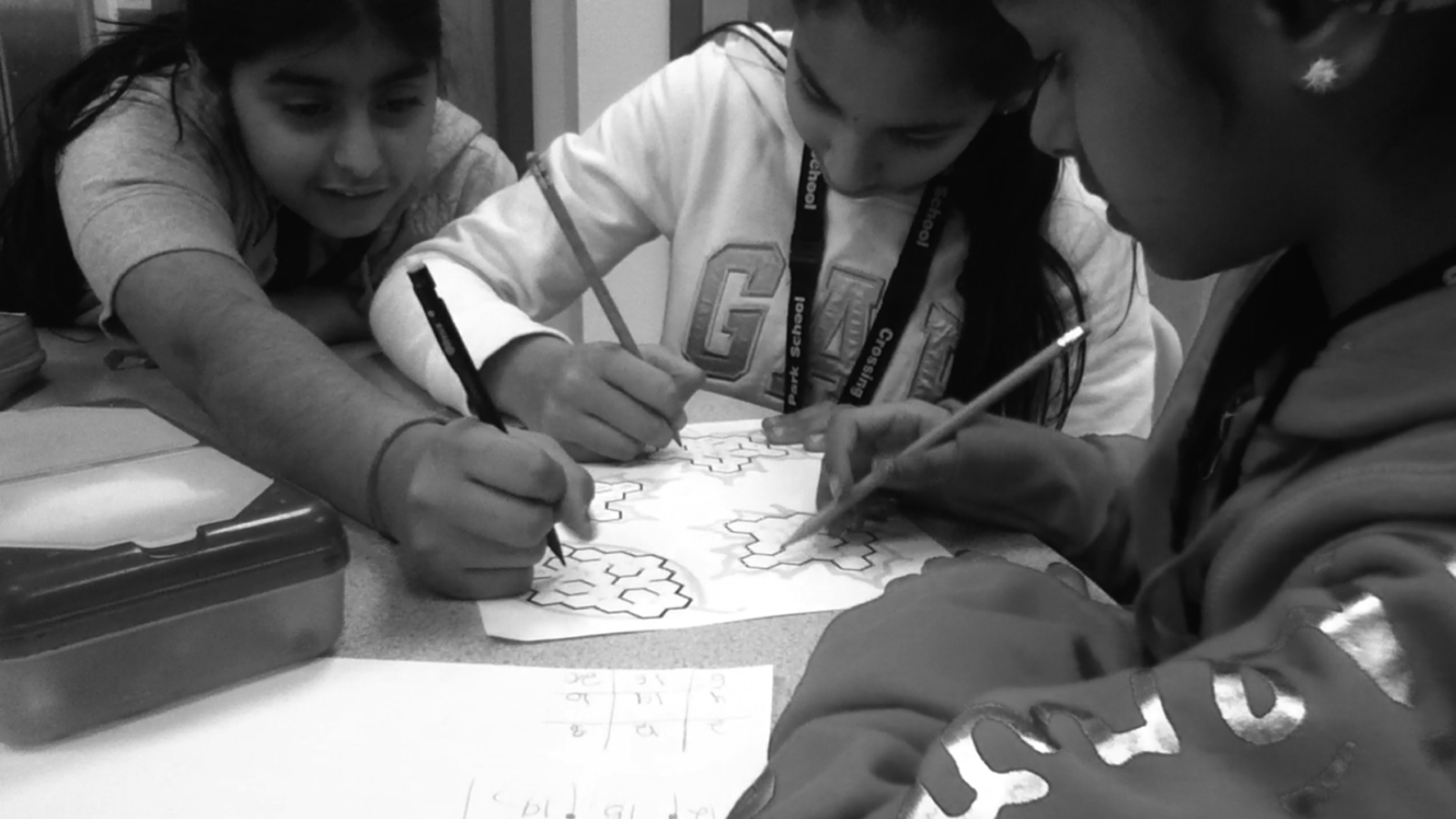
Please use MathPickle in your classrooms. If you have improvements to make, please contact me. I'll give you credit and kudos 😉 For a free poster of MathPickle's ideas on elementary math education go here.
